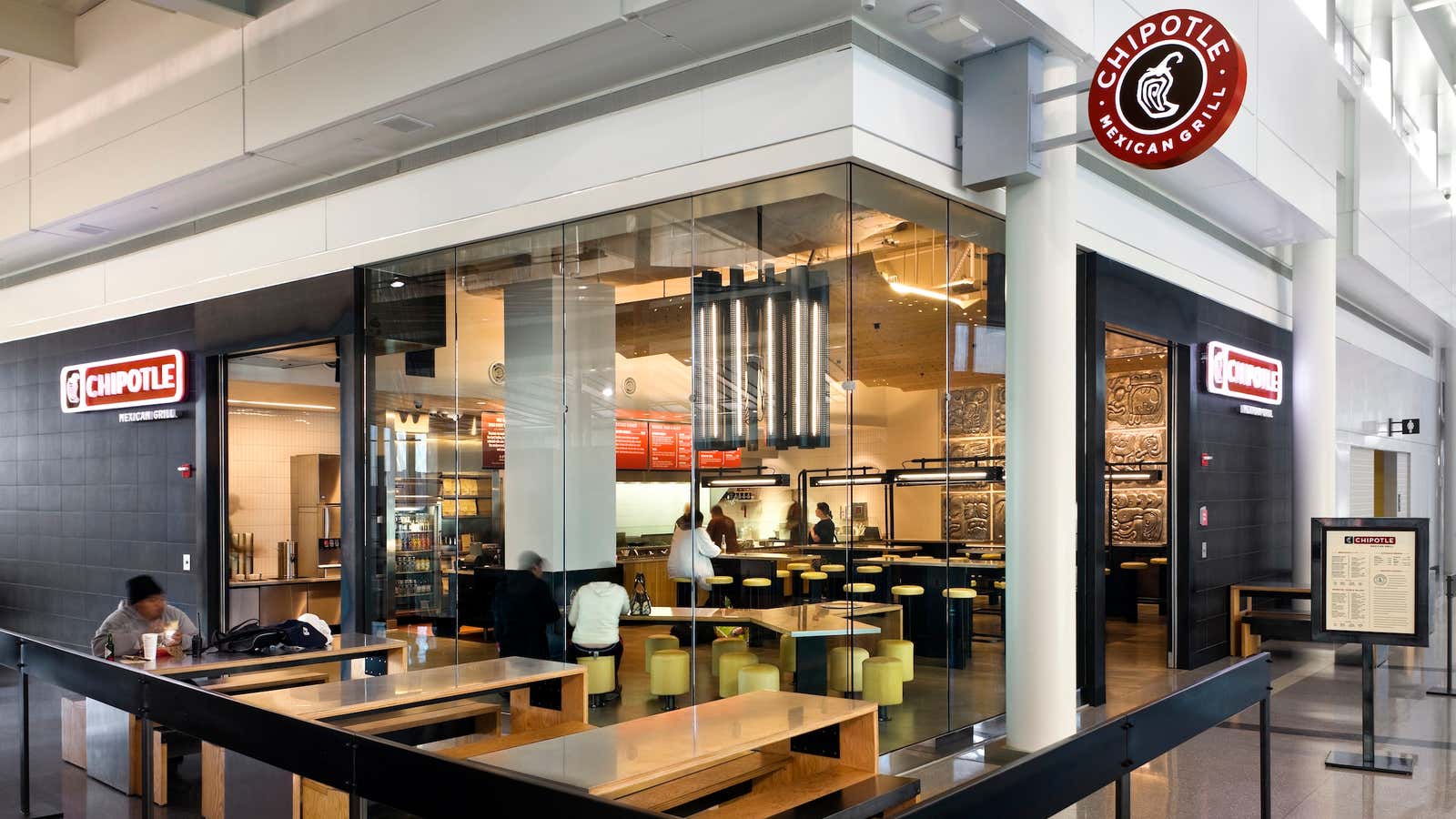Chipotle is, by any measure, already a huge success. It has impressive sales and stock price growth, a unique management culture, a thriving sustainable-food brand, and industry-leading service speed. But despite having grown to 1,700 locations, the casual Mexican food chain hasn’t achieved anything close to the omnipresence of, say, its former owner.
It’s working on that, though.
Chipotle sees room for more than 4,000 of its prototype locations—and believes it can penetrate the market even further with a new, scaled-down format that puts some of the best aspects of its offering in a much smaller package.
Inspired by extremely expensive occupancy costs in Europe and a growing preference for takeout among its American customers, Chipotle is gearing up to bring comparatively tiny, takeout-focused Chipotles to America’s small towns and strip malls. Co-CEO Montgomery Moran described the plan during Chipotle’s July 2014 earnings call:
“We’re looking at some sites right now in the United States as well where these stores will be really, really, really small and where we would have very, very little ceiling… There are a number of reasons why we think that that is a good idea, one of which is that where as we used to be a mostly a dining restaurant 14 years ago, and I’d say about eight years ago, we were 50/50 dining and take-out. Now we’re about two-thirds takeout.”
Smaller-format locations would require less investment upfront than the $800,000 that its regular stores require. Sales would be lower, too—an expected $1.4 million per location, versus a company-wide average of $2.5 million—but that doesn’t mean they would be any less successful than its standard-size locations. ”This ‘new A model’ will be much cheaper and more efficient and presumably could not handle the same volumes of bigger stores, but would allow development in many smaller footprints/markets to generate returns not feasible on the higher investment levels,” restaurant industry analysts at J.P. Morgan wrote in a December note to clients.
The company, which already has put a handful of smaller-format locations in Europe, will try this in the US as a “separate, parallel path” as it continues to open full-size locations, according to the analyst report.
Until now, Chipotle mostly has stuck to high-traffic locations that are used to accommodating big crowds at lunch and dinner hours. But it takes a lot of real estate to house all those customers, not to mention all the staff needed to cook the food and keep the lines moving—and not every town can support a location with the kind of traffic Chipotle has grown used to at its full-size restaurants.
Developing a smaller, cheaper format will let Chipotle go after markets it previously left alone, and give it a sense of just how far its thriving brand can expand.
